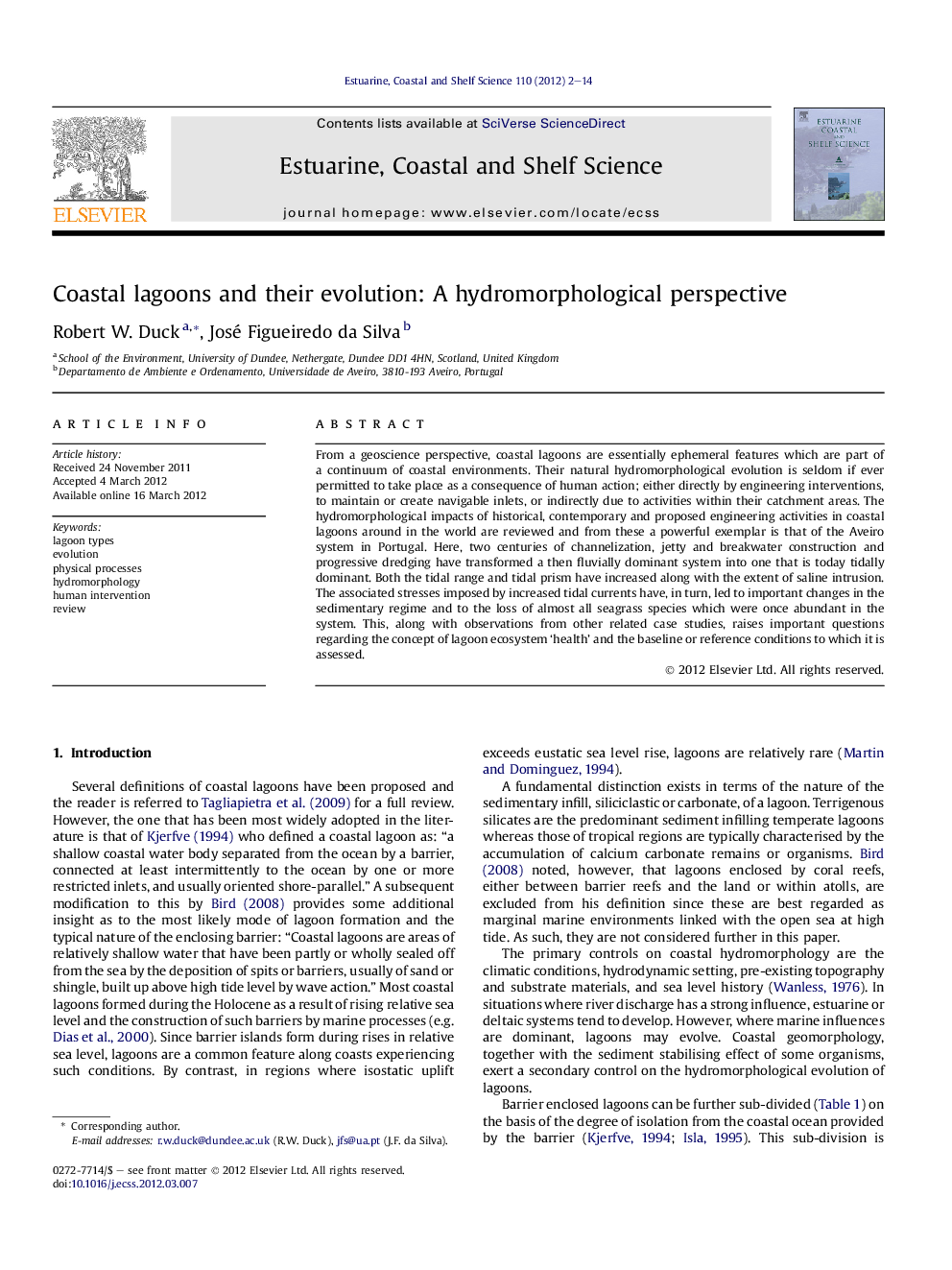| Article ID | Journal | Published Year | Pages | File Type |
|---|---|---|---|---|
| 4540107 | Estuarine, Coastal and Shelf Science | 2012 | 13 Pages |
From a geoscience perspective, coastal lagoons are essentially ephemeral features which are part of a continuum of coastal environments. Their natural hydromorphological evolution is seldom if ever permitted to take place as a consequence of human action; either directly by engineering interventions, to maintain or create navigable inlets, or indirectly due to activities within their catchment areas. The hydromorphological impacts of historical, contemporary and proposed engineering activities in coastal lagoons around in the world are reviewed and from these a powerful exemplar is that of the Aveiro system in Portugal. Here, two centuries of channelization, jetty and breakwater construction and progressive dredging have transformed a then fluvially dominant system into one that is today tidally dominant. Both the tidal range and tidal prism have increased along with the extent of saline intrusion. The associated stresses imposed by increased tidal currents have, in turn, led to important changes in the sedimentary regime and to the loss of almost all seagrass species which were once abundant in the system. This, along with observations from other related case studies, raises important questions regarding the concept of lagoon ecosystem ‘health’ and the baseline or reference conditions to which it is assessed.
